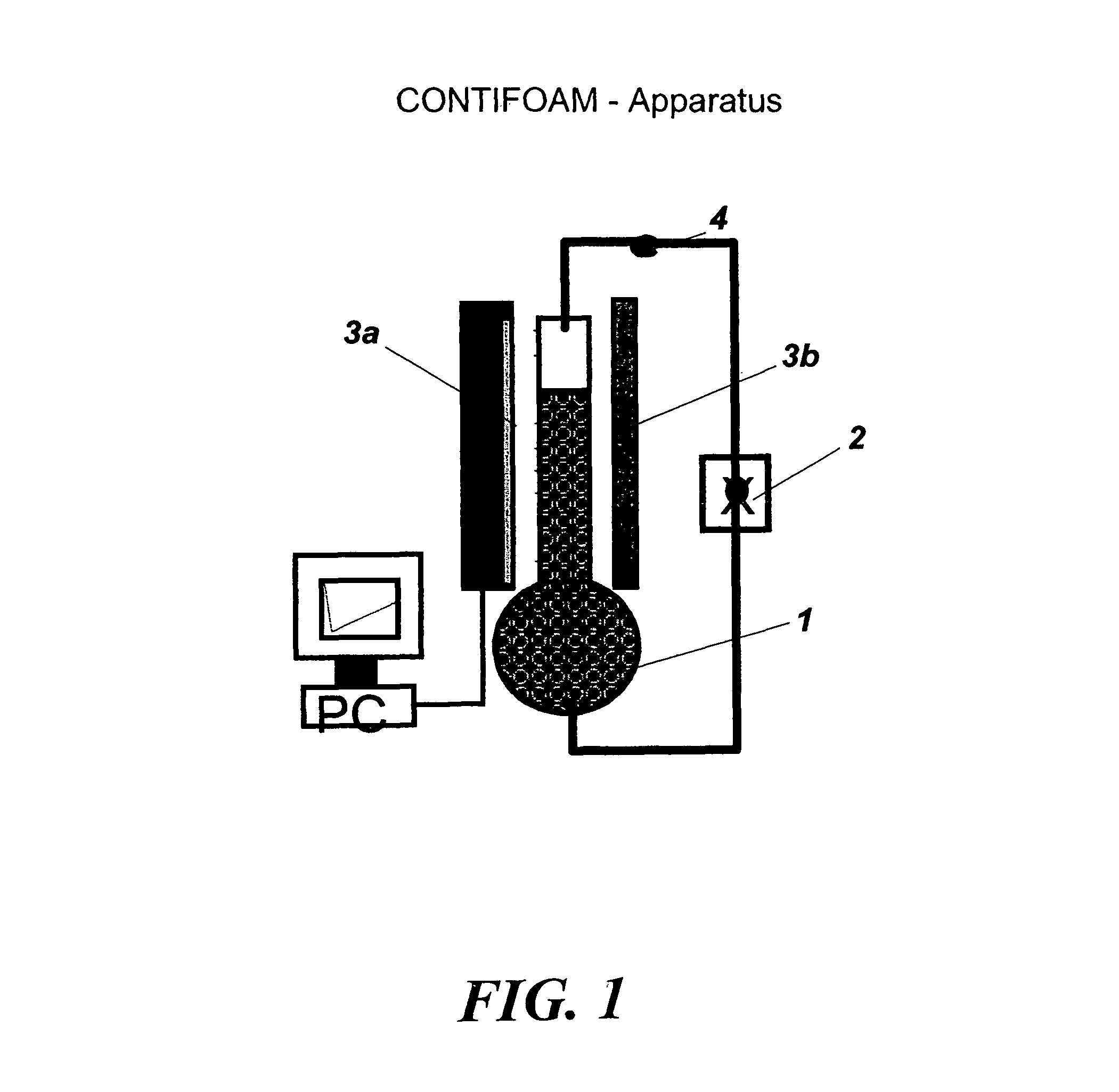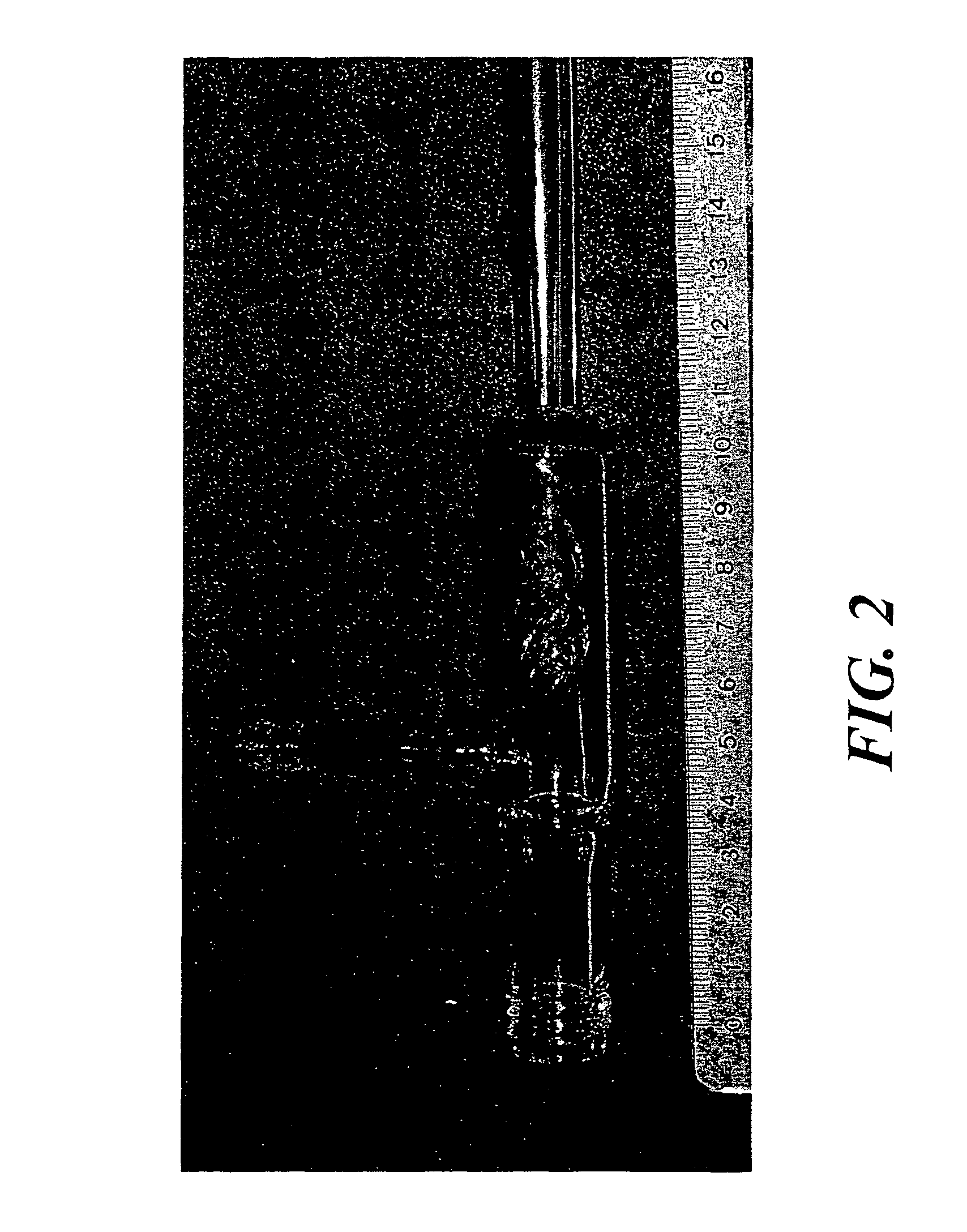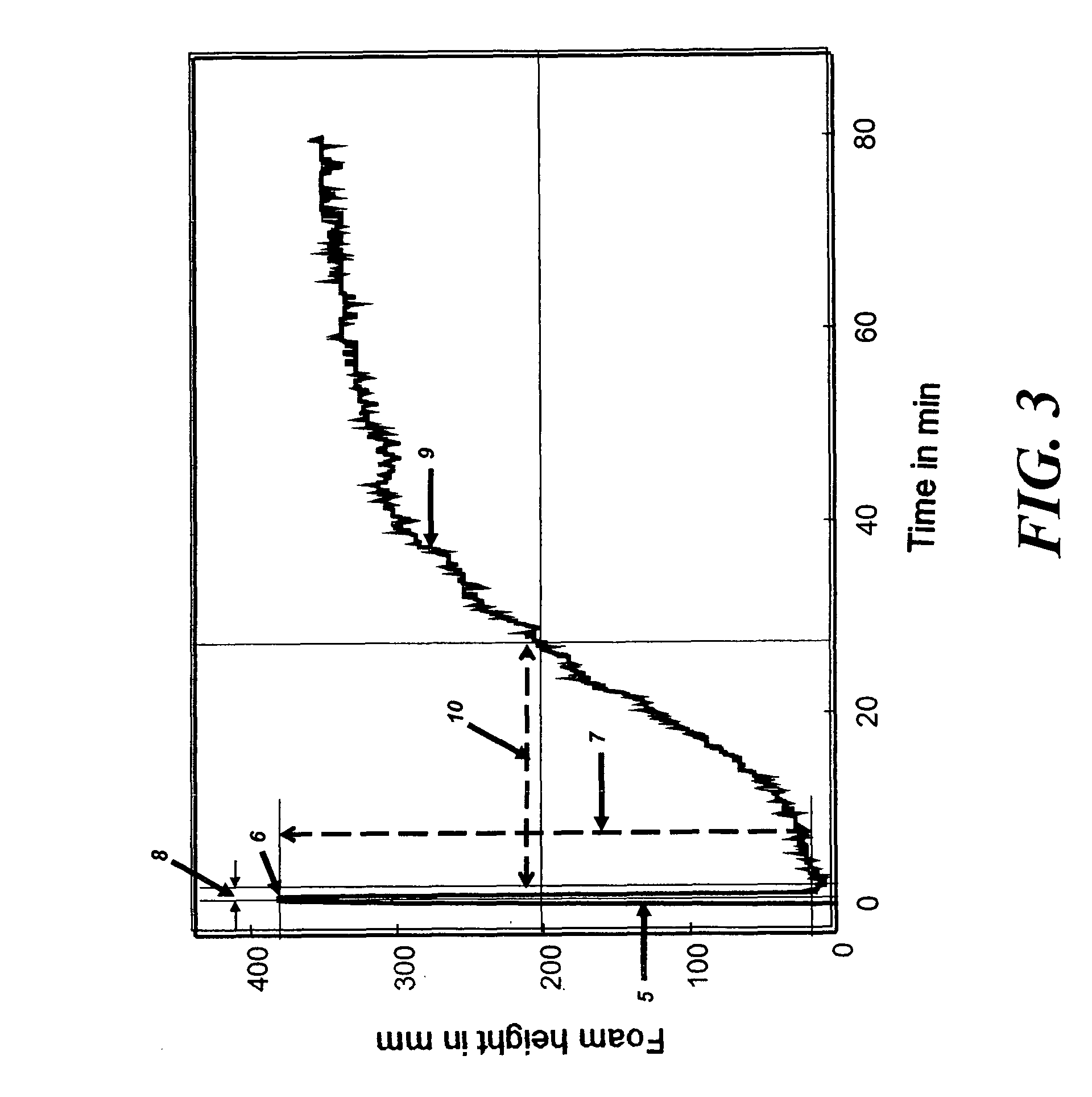Hydrophilic precipitated silica for defoamer formulations
a technology of precipitated silica and defoamer, applied in the field of hydrophilic precipitated silica, can solve the problems of unsatisfactory values of prior art precipitated silica for some if not all of the stated parameters, and achieve good performance properties
- Summary
- Abstract
- Description
- Claims
- Application Information
AI Technical Summary
Benefits of technology
Problems solved by technology
Method used
Image
Examples
example 1
[0193]63 l of deionized water were charged to an 80 l precipitating vessel and heated to 88° C. Waterglass was added to this initial charge (modulus=3.5; density=1.343 g / ml) at a metering rate of 6.5 l / h and sulfuric acid (concentration=7.167 mol / l) was added with a metering rate of 1.56 l / h, metering taking place so as to maintain a pH of 8.0-8.5 (measured on a sample with a temperature of 60° C.). After 100 minutes the metered feeds ended. Subsequently the precipitation suspension was acidified to a pH of 3.0 with sulfuric acid (concentration=7.167 mol / l), with the same metering rate as before, and the suspension was then aftertreated in a drying oven at 50° C. for a period of 22 hours.
[0194]The suspension was filtered and washed sufficiently with deionized water. The resulting solids content of the filtercake was 15-17%.
[0195]With deionized water introduced initially, and with gentle stirring, the filtercake was liquefied so as to give a silica suspension with a solids content of...
example 2
[0198]1679 l of deionized water was charged to an 2 m3 precipitating vessel and heated to 88° C. Added to this initial charge was waterglass (modulus=3.5; density=1.343 g / ml) at a metering rate of 3.93 kg / h and sulfuric acid (concentration=17.62 mol / l) with a metering rate of 0.509 kg / h, metering taking place so as to maintain a pH of from 8.0 to 8.5 (measured on a sample with a temperature of 60° C.). After 100 minutes the metered feeds ended. Subsequently the precipitation suspension was acidified to a pH of 3.0 with sulfuric acid (concentration=17.62 mol / l), with the same metering rate as before, and the suspension was then aftertreated in an aging vessel at 50° C. for a period of 22 hours.
[0199]The suspension was filtered and washed sufficiently with deionized water. The resulting solids content of the filtercake was 15-17%.
[0200]With deionized water introduced initially, and with gentle stirring, the filtercake was liquefied so as to give a silica suspension with a solids conte...
example 3
[0255]Both a mineral oil dispersion and a silicone oil dispersion were produced from the product from example 1 and were investigated for defoaming action.
PUM
| Property | Measurement | Unit |
|---|---|---|
| mean particle size d50 | aaaaa | aaaaa |
| density | aaaaa | aaaaa |
| temperature | aaaaa | aaaaa |
Abstract
Description
Claims
Application Information
 Login to View More
Login to View More - R&D
- Intellectual Property
- Life Sciences
- Materials
- Tech Scout
- Unparalleled Data Quality
- Higher Quality Content
- 60% Fewer Hallucinations
Browse by: Latest US Patents, China's latest patents, Technical Efficacy Thesaurus, Application Domain, Technology Topic, Popular Technical Reports.
© 2025 PatSnap. All rights reserved.Legal|Privacy policy|Modern Slavery Act Transparency Statement|Sitemap|About US| Contact US: help@patsnap.com



